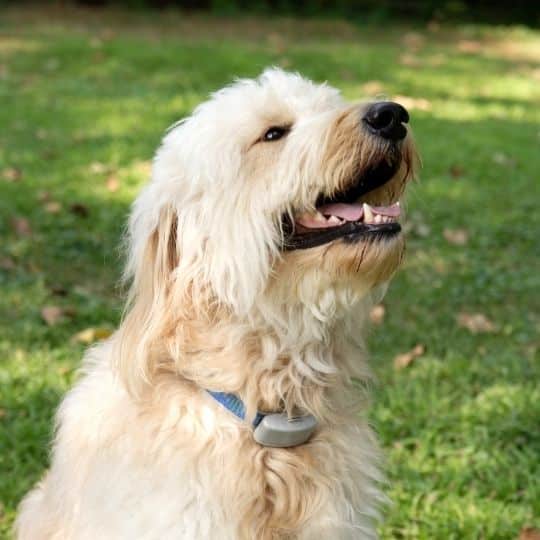Do shock collars hurt dogs? Unfortunately, they do, shock collars hurt dogs physically and psychologically. They are unpleasant, painful, and frightening, and make them discomfort.
In some countries, shock collars are banned as a negative impact on the welfare of dogs.
Any changing natural behavior is already stressful for the dogs, and shock collars just make that even worse and harder for dogs.
Do Shock Collars Hurt Dogs?

As a Vet, I can say that many dog owners ask this question before buying shock collars.
However, I’m not sure that they get the right answers and information, or they just don’t want to believe that shock collars hurt dogs.
In this article, I’m going to give answers to frequently asked questions like do shock collars hurt dogs, and explain how shock collars hurt dogs.
Do Shock Collars Work?
Yes, shock collars work, the manufacturers make them work. In a short time, any owner or dog trainer can make his dog, or any other dog to stop doing something that they think is bad.
It’s a fast way, but not a pleasant way. Some owners try to change natural behavior or try to punish their dogs for doing things like barking, jumping, aggressive behavior, etc.
That is a little bit difficult because it’s against their will. Some of them don’t have so much time, and they want to change their behavior as soon as possible.
The good side is that the shock collar has different levels of electrical stimulation, so the lowest levels do not hurt dogs so much.
However, when dogs don’t cooperate and owners go to higher levels too quickly, that is one of the bad sides.
Most important thing is that owners need first to be sure that barking or other unwanted behavior isn’t related to some health problems.
If they bark because they are in pain or feeling sick, when the owner put on a shock collar to prevent barking, it can harm their dog in a very bad way.
A lot of dogs do doggy things and they are healthy, but that changes their natural behavior that needs to be a lot more gentle.
Shock collars do hurt dogs, and make them feel uncomfortable and unpleasant. It provokes in them fear, and pain, and in some dogs can provoke aggression.
Nobody wants to hurt their dog, or make them uncomfortable. That’s why shock collars aren’t the best solution. There is always a better way that doesn’t hurt dogs, the way shock collars do.
Do Shock Collars Cause Cancer in Dogs?

So far, it has not been proven that shock collars can cause cancer. They can cause some other health problems, but cancer isn’t one of them, and that is the good side.
Shock collars do not have many good sides. Also, there have been speculations about the connection between shock collars and cancer.
In a couple of cases, dogs were diagnosed with cancer, and they were wearing shock collars, but there was no direct connection between cancer and shock collars.
It’s not a clear study, it’s just an assumption because the cancer was in the neck area. There can be other reasons why that dogs have a diagnosis of cancer, but shock collars are not one of them.
Shock collars are sold as safe for dogs’ health. We can confirm that, but only for this part, they don’t cause cancer.
There are other ways that shock collars harm dogs, but luckily cancer isn’t one of them.
Can Shock Collars Kill a Small Dog?
No, shock collars can’t kill any dog, big or small one. They are approved as safe for use.
The electrical stimulations in shock collars are not strong enough that can cause death. That electrical stimulation is strong enough to hurt dogs in a cruel way but definitely can’t kill any dog.
There is a shock collar for small and for big dogs. Manufacturers make different sizes and strengths because big dogs and small dogs can’t be equal in voltage.
Voltage and duration of electrical stimulation can cause pain, fear, and stress, but not death. In one study they put the shock collars on 12 weeks old puppies, and they survived of course.
Because of the difference in age and size, there are different types of shock collars and different levels of that electrical stimulation.
Luckily they didn’t make shock collars so strong that they can cause death, but unfortunately, they make them unpleasant that they can hurt dogs and make them feel anxious, helpless, and in pain.
Shock Collars Side Effects

This is something that interests the owners the most. First, as with any collar, shock collars are making pressure on the neck and throat, especially if we put a collar tight up to the neck.
That pressure can cause damage to the trachea and larynx and may cause difficulty in breathing, called asphyxia.
Also, that pressure can make damage on the spinal cord in the area of the neck. [1]
Further, a dog may develop lesions on the neck if the collar is kept too tight, or if it is kept on the dog for too long.
The lesions are results in mechanical abrasion of the electrodes rubbing the skin, especially in dogs with skin problems.
In addition, shock collars can hurt dogs during sleeping time, only because some owners don’t want to be awakened by barking.
Also, shock collars can cause skin irritation, and can cause alopecia, that’s fur lost in areas that usually hear is normally present.
Construction of Shock Collars
Shock collars consist of two metal prongs that rest against the dog’s skin on the neck.
When that metal prongs send electrical stimulation into the neck of a dog, it causes an uncomfortable and unpleasant feeling.
Dogs are in fear of how to avoid that bad experience again, and they can’t understand right away that barking or jumping needs to stop.
Dogs then put their head in a position where they think that will avoid that discomfort feeling. The tail is down, the ear is down, and they are frightened, or become aggressive more.
They do not feel safe. If the level of that electrical stimulation is high, shock collars can also cause pain.
They also have shown certain behaviors after electrical stimulations such as:
- lowering of ear position
- lowering of tail position
- lifting a front paw
- tongue flicking
- licking lips
- vocalizations
All this is connected to stress and fear.
Higher vocalizations are the usual cause of pain and wish to stop that unpleasant and uncomfortable feeling.
Stress produces high levels of cortisol, and high levels can increase blood pressure, also can increase blood sugar, and suppress the immune system.
High blood pressure can lead to heart disease. After bathing, if any water stays on the skin and fur of the dog, using shock collars can make an injury.
Without residual water, shock collars should not cause burns because discharge does not contain enough energy.
Some dogs become more aggressive because they want to make that uncomfortable feeling go away.
Read Also: How to Keep Dog House Warm
Bottom Line: Is There a Better Solution?
Of course, there is a better solution. Using rewards is the best possible way that can make your dog stop doing things you don’t want.
Because shock collars hurt dogs, you can lose connection with your dog. He can become insecure in any actions that can come from you.
Your dog can become anxious, can totally change behavior, and develop some health problems. They can stop eating or drinking water. Stress can be the trigger of a lot of diseases.
We should strive to reduce the amount of stress our dogs deal with. They need to feel that they are loved and secure in our companion.
Shock collars do not do that, they hurt them and make them feel uncomfortable. Dogs feel pain and fear just like humans. We know how it fell being in pain and fear and it’s not pleasant at all.
Because shock collars hurt dogs, they should not wear them at all. In some countries, shock collars are banned, and they have a good reason for that. [2]
We love our dogs and they need to be happy and not unhappy. They are part of our family and we don’t want to hurt them in any way.
Read Next: Do Newfoundland Dogs Shed